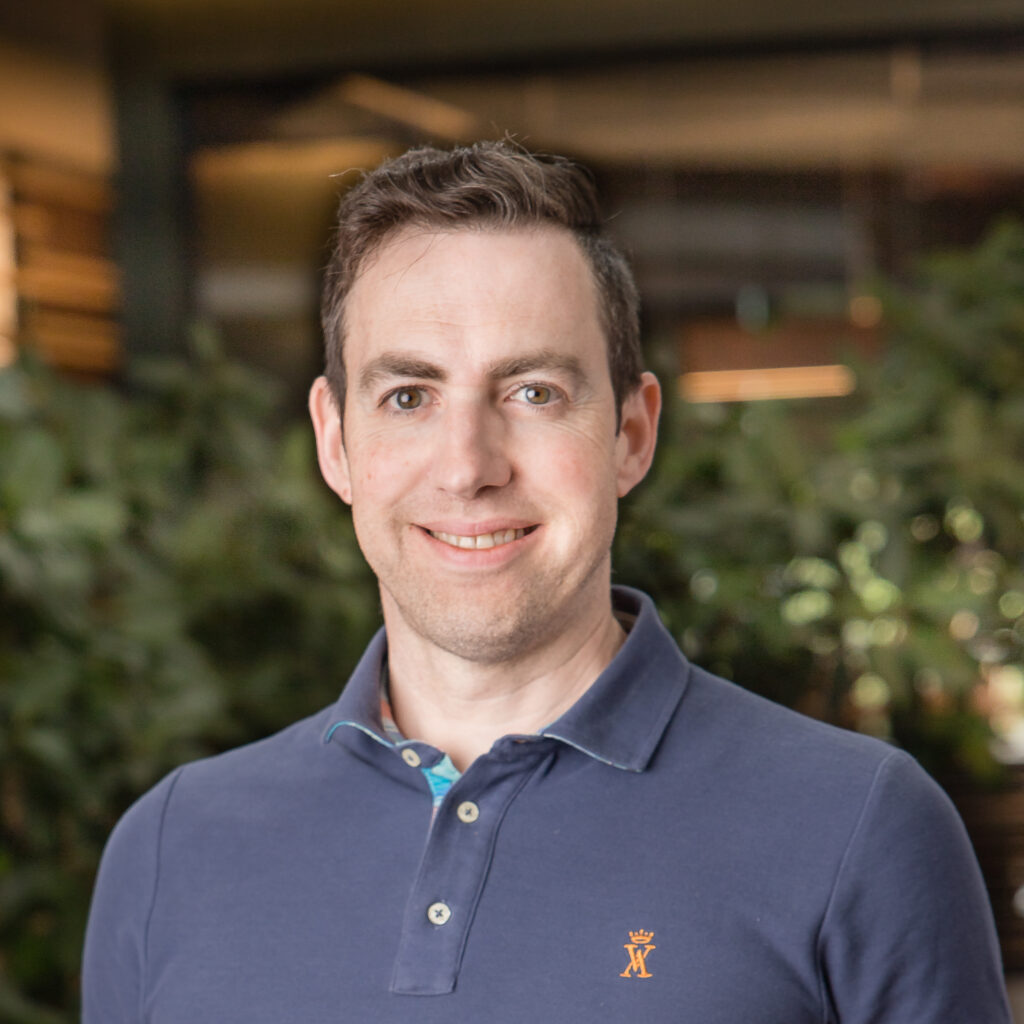We hear a lot of stories about AI tools helping people complete tasks more quickly, or automating menial or redundant tasks. However, Promega isn’t just interested in speeding things up. We’re focused on leveraging AI tools to help us do things better. All over the organization, employees are leveraging large language models (LLMs) and machine learning systems to accomplish things that weren’t possible before, or to make their work more effective against their goals.
Three employees shared their recent successes, including strengthening supervisory skills, scaling up production processes and training new team members. Each of these examples uses AI in a unique way, while still elevating human expertise, creativity and decision-making.
Coaching with Data and Empathy

Daniel Brunet is a Regional Sales Manager with seven direct reports. As a supervisor, his approach to one-on-one check-in meetings balances positive reinforcement with accountability.
“In the past, our meetings relied on a lot of anecdotal information,” Daniel says. “As a manager, I prefer to have objective information we can share with each other.”
Daniel noticed that when he only met with each employee every two weeks, they would sometimes lose track of things that came up in the previous meeting. He took notes by hand but found it cumbersome to review all of that writing each time he met with someone.
Over the past few months, Daniel created a dedicated ChatGPT Project for each employee. He started uploading recordings of their meetings to the project to create summaries and lists of action items. Before every meeting, he generates an agenda based on outstanding issues. This helps him keep track of loose threads and ensure every meeting built on the last.
Daniel hasn’t stopped there, though. As account managers and client representatives, his team members have goals and metrics that indicate their performance in different areas. These metrics go beyond just sales numbers – Daniel mentions management of demo instruments as an example. He started uploading all of this this data into the ChatGPT projects so he could connect it to their meeting agendas and recaps.
“I’m able to be much fairer this way,” Daniel says. “When a rep comes to me and wants to talk about a promotion, we can easily review all of this information together. We can identify any areas they need to work on and build a plan to help them address them. And when I go to write my end-of-year reviews, ChatGPT gives me a great starting point by digesting all of our meetings for the year alongside these metrics.”
Finally, Daniel has found ways to leverage the ChatGPT-based tool to improve his personal connections with his employees. His team is all field-based, so their relationships are primarily maintained over Microsoft Teams calls. As a dominant personality, he wants to be sure he gives his team members space to talk about what’s important to them. When ChatGPT analyzes the meeting recordings, it also gives him stats about how much time each participant spends speaking. While he doesn’t have a set target in mind, he likes to see that new employees own a larger share of the meetings over time, indicating growth in confidence.
“I can focus on having this very human conversation, and AI sits in the background to give me some added insights,” he says. “There’s always things going on in sales. It’s important to me that we use these check-in calls to highlight what’s going very well, and make sure they feel extremely supported in their role.”
Modernizing Manufacturing Training

Matt Austin is a Supervisor in Product Finishing. Working in Operations, he noticed that much of the training material was based on long, technically dense Standard Operating Procedures (SOPs). Not only were they painfully dull to read, but they were also an ineffective at teaching someone to do a hands-on task.
“If we took our six main lines in dispensing and combined the SOPs, you’d have a 23-page document,” Matt says. “No one wants to read that. It’s highly technical with a lot of jargon. The native English speaker sometimes doesn’t understand it. Now what happens when you hand that to someone still learning English as a second language? How can we ensure they’re understanding what they’re supposed to be doing?”
Matt implemented software from DeepHow to improve the learning and training processes in Promega Operations. Now, teams are creating videos of established employees performing these processes with narration that explains each step, highlighting the most important points. Matt points out that this system is more aligned with how people are learning in their everyday lives. When a faucet is dripping, most people aren’t pulling out the user manual; they’re going to platforms like YouTube.
“You still read the SOP, but then you can watch the video, go do your on-the-job task, and come back to watch the video again. You’ve increased the repetition to three times while only physically doing it once. If you can watch these videos two or three times before you go do the task, you’re coming into it with a much better understanding of what comes next. This frequency increases learning and decreases the training time.”
DeepHow includes embedded AI features that allow the team to segment videos into discrete steps with auto-generated transcripts. Users can search for keywords in the narration and generate quizzes to test their retention. One of Matt’s favorite features, though, is translation.
“A user can change their subtitles to more than 30 different languages,” he explains. “We have a lot of native Spanish speakers in product finishing, and our training is much more accessible when we’re giving them information in a way they can better understand.”
Matt doesn’t speak Spanish, so early in the implementation, he tested the feature by asking someone to narrate the video in Spanish. He used DeepHow to generate English subtitles, and he was amazed at the accuracy.
“We’re focusing on helping the learner,” Matt says. “It’s about increasing frequencies and giving people the means to access training in styles and formats that work best for them. We’ve seen that this helps people learn their on-the-job tasks quicker, with fewer questions, and resulting in fewer errors down the line.”
Engineering Smarter Systems

Process engineering is complex. Documentation is critical for learning from the past decisions, as well as informing data-driven decisions. Senior Process Engineer Tyler Previs has embedded AI tools at every step of his team’s workflow, empowering them to leverage past learnings and data to build high-quality solutions.
To start, he established a legacy knowledge database for a major project. All past emails, batch records and meeting notes were uploaded to a custom GPT, so that anyone on the team could trace decisions and understand project roles. With such extensive documentation, they could easily find why decisions were made at any point in the project, along with the stakeholders involved. Most importantly, it centralized all the information in a space that anyone could access, and nothing would be lost if team members changed roles or left Promega.
Next, he uploaded technical manuals and cut sheets for new equipment into a new GPT. This tool helped him configure different aspects of the machinery, identify functionality to meet specific needs, and calculate parameters for critical processes that ran through the instrument. Tyler says this helps him build stronger approaches to leveraging all possible capabilities.
“I know what I want to do, but I don’t know how to make it happen,” Tyler says. “The device already had the capabilities, but I didn’t know that until the AI tool showed me.”
Finally, Tyler has augmented his modeling abilities using AI to process data. For example, a membrane filtration system used on a large-batch production line has many parameters to manipulate. Variables like pressure, flow rate, pump speed and backpressure control all influenced each other, and each had to be perfectly calibrated when scaling up a process. Tyler built parameter models using an AI tool and an excel spreadsheet to track how these variables influenced each other and optimize the process. This eliminated several rounds of costly trial-and-error approaches.
“We already have equipment built, so how do we change the manufacturing method to use the equipment we have today and still be successful?” Tyler says. “This way, you can run the math before ever running the equipment. It steers you in the right direction so you’re not spinning your wheels.”
Poncho Meisenheimer, Promega VP of R&D, shared his thoughts on how AI is changing the life sciences world. Read the blog here.
Latest posts by Promega (see all)
- From Mt. Fuji to the Lab Bench: A UW-Madison Student’s Summer in Japan - December 3, 2025
- Promega Fc Effector Assays: Measure Every Mechanism - November 26, 2025
- Residence Time: The Impact of Binding Kinetics on Compound-Target Interactions - November 19, 2025
